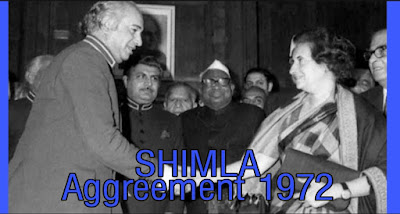What is the Karachi Agreement
When Pakistani tribesmen had invaded Kashmir, the UNCIP was instructed to work jointly with the two states and create a condition conducive for a plebiscite. To immediately halt the hostilities, the UNCIP, through negotiations, helped India and Pakistan sign an agreement in 1949 in Karachi.
As per the Karachi Agreement, a ceasefire line was drawn as a temporary arrangement to divide the line between Kashmiri territory left with India and Pakistan-occupied Kashmir (PoK) which they called Azad Kashmir.
The Pakistani army decided to take over the operational control of the Pok and stationed its troops in the region. India had alleged that this troop presence of Pakistan was one of the reasons why a condition conducive for a plebiscite had not been created. The ceasefire line came into effect from 1 January 1949.
India alleged that the stalemate over Kashmir could not end and a plebiscite could not happen as Pakistan did not withdraw its troops from the PoK which was a necessary condition for restoration of peace leading to a future plebiscite.
As time progressed, in 1965, Pakistan launched another conflict with India. The Indian army gave a befitting response to Pakistan.
In the subsequent Soviet-brokered negotiations, a Tashkent Agreement was concluded and both sides agreed to maintain a status quo. In 1971, in the war with East Pakistan, as explained in the previous section, India yet again gave a serious blow to Pakistan by slicing of Bangladesh from its control.
Karachi Agreement after the 1971 war
After the 1971 war, India and Pakistan signed the Simla Agreement/ Shimla Agreement in 1972.
Under the Simla Agreement, Pakistan diplomatically paved way for the recognition of the creation of Bangladesh. Under the Agreement, the ceasefire line established by the Karachi Agreement of 1948 was re-designated as the Line of Control (LoC).
Under the Karachi Agreement, the demarcation in the north at point NJ9842 was not clear. The two sides had no disagreement in the glacier area as the terrain was uninhabitable.
In the 1970s, Pakistan undertook expeditions in the region near NJ9842 in an area called the Siachen glacier. India too launched an expedition in the Siachen glacier. Pakistan eventually made an attempt to occupy the glacier. In 1984, the Indian army, under Operation Meghdoot, thwarted Pakistan's efforts and successfully occupied the Siachen glacier.
Under the Simla Agreement of 1972, as mentioned above, the ceasefire line was now renamed as the LoC and thereby the tenure of UNMOGIP to maintain peace on the ceasefire line came to an end.
The Simla Agreement of 1972 gave India an opportunity to put the conversion of the Kashmir issue from an international to a bilateral issue on paper. In 1972, under the Simla Agreement, Pakistan agreed to resolve Kashmir bilaterally without any third-party intervention. Though India gained at this point in 1972, however, critics point out that India lost an opportunity in 1972 to make the LoC as an international border. Due to a lack of clear demarcations, firing across the LoC continued from the Pakistani side in the 1980s, 1990s, and 2000s.




